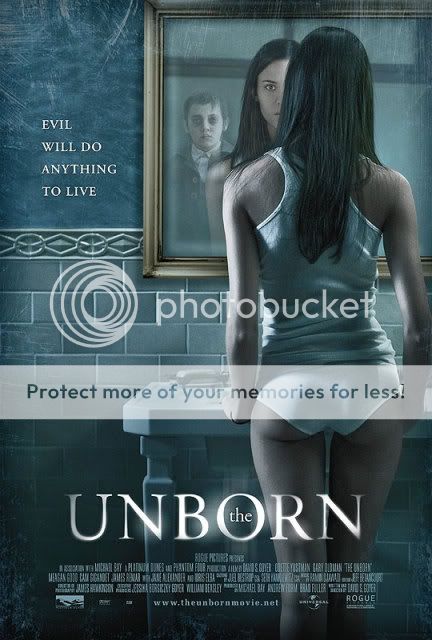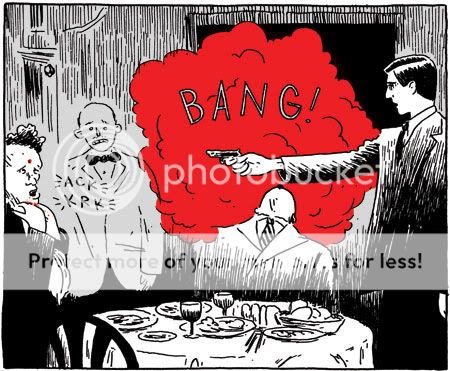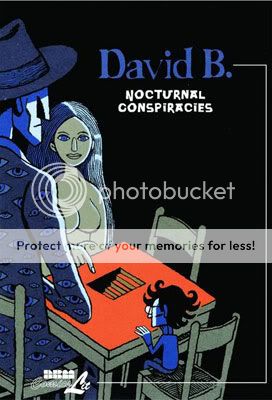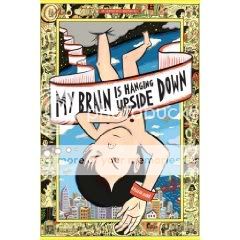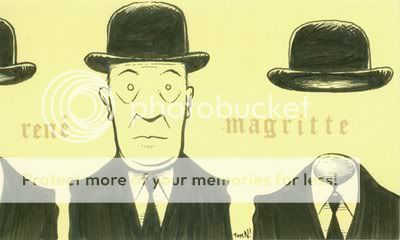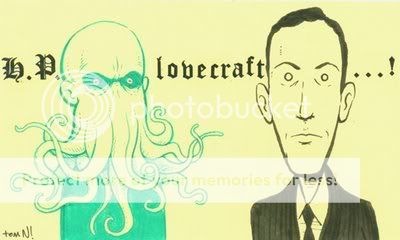
Real Stuff
Dennis P. Eichhorn, writer
∆, Rick Altergott, Peter Bagge, Jim Blanchard, Ariel Bordeaux, Rupert Bottenberg, Chester Brown, Ivan Brunetti, Charles Burns, Howard Chackowicz, David Chelsea, Dan Clowes, David Collier, Dave Cooper, Robert L. Crabb, Lloyd Dangle, Julie Doucet, Michael Dougan, Gary Dumm, B.N. Duncan, Gene Fama, Mary Fleener, Drew Friedman, Renée French, Roberta Gregory, Sam Henderson, Gilbert Hernandez, Jaime Hernandez, Sean M. Hurley, Gerald Jablonski, Peter Kuper, Carol Lay, Jason Lutes, Kent Myers, Bernard Edward Mireault, Carel Moiseiwitsch, Terry Moore, Pat Moriarity, Joe Sacco, Seth, Leslie Sternbergh, Carol Swain, Holly Tuttle, Colin Upton, J.R. Williams, Jim Woodring, Joe Zabel, Mark Zingarelli, artists
Swifty Morales Press, 2004
208 pages
$19.95
Buy it used, and cheap, from Amazon.com
How is Denny Eichhorn not a major cult figure? I’m honestly curious, and maybe some of my older readers can fill me in, since obviously he was a big deal in ’90s altcomix culture. But I can’t remember ever discussing him or his work with any of my friends or peers; the few times I’ve brought him up in the context of being one of three writers who’s made a go of creating alternative comics without drawing them himself, alongside Alan Moore and Harvey Pekar, I’ve gotten funny looks. Heck, I didn’t even really know what I was talking about, not until I read this collection. And shit the bed, I sort of feel like I need to physically pass it around to all of my friends until they’re all on my wavelength. To quote The Big Lebowski, “I won’t say ‘a hero,’ ’cause what’s a hero?”–but Denny Eichhorn is a goddamn inspiration.
I think the great trick of this collection of some of Eichhorn’s sex/drugs/violence-soaked autobio strips–drawn by the above host of collaborators, all of whom seem perfectly at home with their material, which is really a testament to them and Eichhorn both–is editor and publisher Caleb Wright’s chronological arrangement of them. That way, we get to know Eichhorn as a child first, and by the time his most outré misadventures head our way, it’s too late to detach ourselves from him. So sure, it’s funny to watch Peter Bagge draw Eichhorn getting so freaked out by his first Mad magazine he pukes, or Pat Moriarty showing a mix-up at a pharmacy that leads to young Denny being sold a pack of condoms for a science project, or early-vintage Dave Cooper (already a dazzlingly slick illustrator) presenting the story of how the cops broke the crazy next-door neighbor’s dick free of the glass bottle it was struck in. (There will be blood.) Even in the first serious bouts of violence we see, teen- and college-age Eichhorn is in the right; when a double-page Joe Zabel/Gary Dumm spread shows us exactly what happens when Eichhorn smashes a glass bottle into the face of his attacker, or J.R. Williams shows the toe of Eichhorn’s boot literally splattered with the remains of his assailant’s eyeball, you almost can’t help but cheer even as you recoil, laugh with triumph even as you shake your head with disbelief. It’s like the autobiographical comics equivalent of the climax of Rambo.
So when you finally start seeing hints of how Eichhorn’s tendency toward illicit behavior can bring out the worst in other people, and vice versa, it becomes a lot harder to write him off. Yes, there’s a way of looking at things where tipping off the part-time prostitute who’s hosted a week-long gangbang of the entire freshman class of Eichhorn’s university that the cops were on to her was the right thing to do–but this more or less ensured a continued life of abusive neglect for the baby she plies with cola and calls “Shithead” when she’s not fingercuffing the football team. There’s no reason to believe that the string of sex workers with whom Eichhorn has off-the-books dalliances are anything but the carefree lust-for-life types they (and Eichhorn!) appear to be–until one turns out to be the accomplice of a pair of serial sex murderers (and a serial killer in her own right), and another sticks a gun in her mouth and pulls the trigger mere hours after sticking Denny’s cock in her mouth and pulling his. That last strip may contain the most memorable cartooning in the entire anthology, which is really saying something amid the Saccos and Colliers and Chelseas and Woodrings and Doucets: Carel Moiseiwitsch’s deep blacks and deranged linework evoke Rory Hayes as the soon-to-be-suicidal woman literally attacks Eichhorn’s genitals, and caps things off with the post-orgasmic entreaty “REMEMBER ME!”–no narrative caption set-up, no establishing shots, just the woman’s demonic face.
This is not to say that it’s all eye-gouging and self-destruction. A lot of Eichhorn’s doping, drinking, and fucking are perfectly delightful for everyone involved, and a lot more are embarrassing but hella funny in hindsight. You’ve gotta love a book that includes a story about a dominatrix that ends with the sentence “Then it hit me: I shoulda pissed on his head!” and whose genuine, if off-kilter, father-son bonding strip involves giving your dad weed. It’s the gestalt of the thing that makes it so memorable, and enough to put you off comics about the awkward night Brooklyn Hipster had that one time forever. It fits right in with Boy’s Club, the Manly Movie Mamajamas, and other vicarious portraits of the less savory side of masculinity pushed to its illogical conclusion. If I could get 20 copies of this I’d give them away as stocking stuffers.







